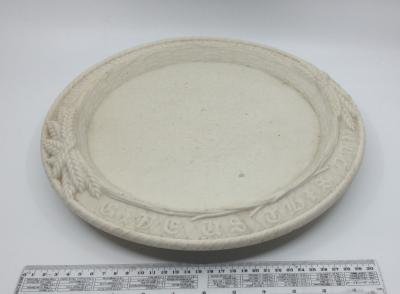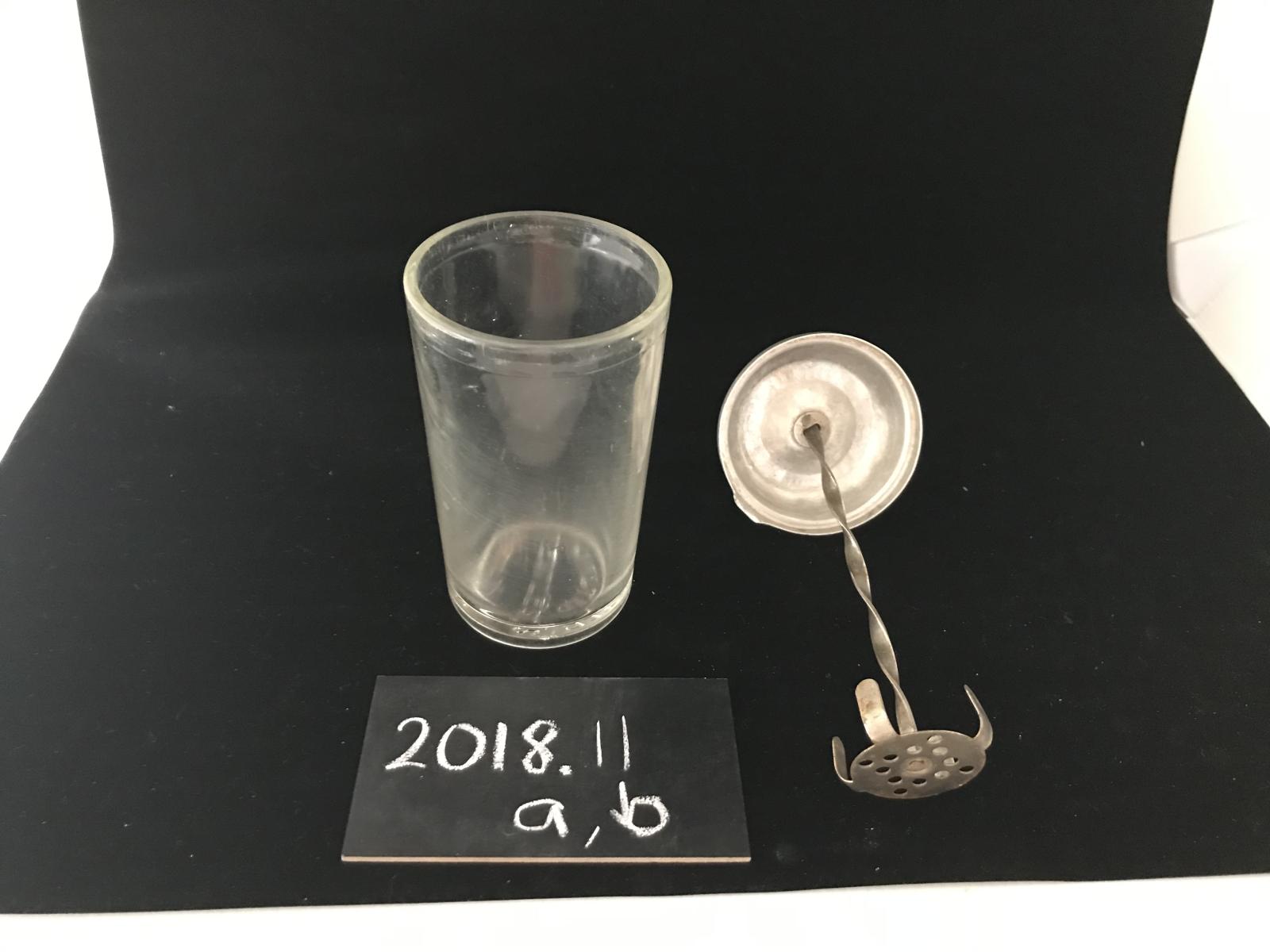Nestles Milkshake Maker
c. 1940This piece is a manual milkshake/malted milk vintage drink mixer, comprising of (part a) glass jar with (part b) metal lid and plunger. The metal lid has a hole in the middle through which a metal mixing shaft is inserted, down into the jar. At the bottom end of shaft there is a metal plunger. The top end of the shaft, which protrudes from the top of the metal lid, has a ceramic knob/handle. The metal lid, shaft, plunger and ceramic knob are all connected together.
The milkshake ingredients would have been put into the jar, the lid screwed onto jar and then the shaft would have been moved up and down enabling the plunger to mix all the ingredients together, to make the milkshake
In 1867, Swiss pharmacist, Henri Nestle, developed a food for babies who were unable to breastfeed. Within five years Nestle milk was being sold world wide for babies, old people and the infirm. The company rapidly developed into the production of other milk based products such as chocolate and condensed milk. In 1908 Nestle set up operations in Australia as the country had become the companies second largest world market for Nestle products. The invention of the beverage called MILO, was a great Australian achievement. Nowadays the brand is sold in 30 countries, with sales of over $550 million.
Details
Details
The brand name is on the base of the jar:
Malter/
Nestles/
The Milk brand name is on the lid:
Nestles/
Malted Milk
The milkshakes, that we refer to in present day, originated in the early 1900's and consisted of flavoured fruit syrups and icecream. By the 1930's, the use of malt milk powder in milkshakes was popularised in the U.S.A. Commercially milkshakes began to be made by the electric blender in 1922, however domestic manual mixers became popular in the 1940's .
This item was donated by Hilda Lord, wife of Geoff Lord who was President of the Busselton Historical Society in 1975 and instrumental in establishing the Museum in the Old Butter Factory Museum.
The Lord family arrived in the Busselton area in 1922 as one of the original Group settlement families at Chapman Hill/ Walsall. The Group Settlement scheme was a Western Australian/ United Kingdom government migration scheme introduced in 1921, to provide a labour force to develop agricultural land in the South West region of Western Australia, reduce unemployment in the United Kingdom and reduce dependence on food imports from interstate. Members of the Lord family have been active community members in the Busselton region since they arrived in 1922.
This item would have Aesthetic value to collectors of vintage domestic ware
Other items from Busselton Historical Society
- 6 Piece Glass Cruet set with brass stand
- Doulton Serving Bowl with Chinoiserie Transferware
- Milk Watcher
- Clothes Dampener / Water Shaker
- Urn Shaped Vase with Gardening Scenes
- Devon Blushware Biscuit Barrel
- French Peach Coloured Decanter and Liqueur Glass set
- Alabaster Bread Plate
- WA Commemorative Jug
- WA Commemorative Bowl
- China Cheese Dish
- Drinking Cup - carved cowhorn





